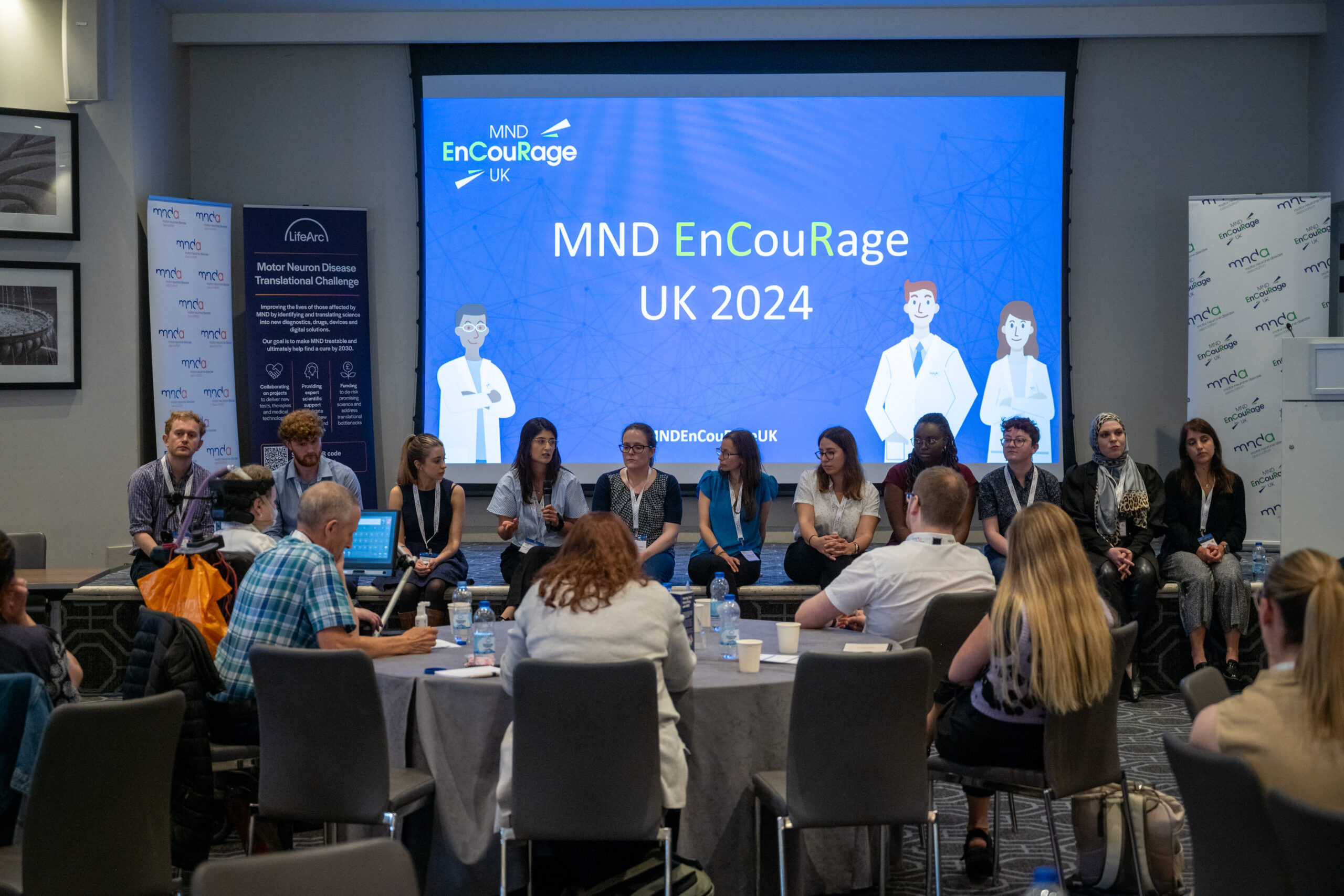The MND clinical trial landscape has grown vastly over the last decade and this has led to increased opportunities for people with MND to take part in research across the globe. Behind these trials, sit a large number of highly dedicated staff at each trial site who make sure the trial is set-up, recruiting and running as it should be. Many trials running in the UK are based at sites which are specialist MND care centres, which the Association supports to ensure that services and staff are well equipped to continue delivering care and research. We chatted to Theresa Chiwera (pictured right), Clinical Trials Manager and Lead MND Nurse at King’s College Hospital, to find out more about her role and how she is involved in clinical trials for MND.

What does your role involve?
In my current role, I am working as the Senior ALS Clinical trials manager. I have both clinical and operational management responsibility. I must make strategic decisions to ensure we effectively and efficiently deliver a high-quality research service to our patients and their families. I am involved in building professional relationships and working closely with other departments within the hospital and our stakeholders to facilitate the smooth running and conduction of clinical trials at our centre. This includes having an oversight on studies set up, recruitment all the way to studies close out. As the lead MND research nurse, I provide leadership, guidance and support to the team on clinical aspects of clinical trials and research studies. This could involve, as an example, providing them with advice on conducting a particular nursing/clinical assessment or best way of communicating with patients due to my clinical experience.
Who do you work alongside?
I work alongside the MND clinical and research team. This involves the Multidisciplinary team (MDT) comprising of consultants, our clinic secretary, Clinical Nurse specialist, physiotherapist and dieticians. I also work closely with my research team which has research coordinators, research practitioners, research assistants, study doctors, project managers and the lab research team.
How long does it take to set up a clinical trial?
It varies with the study, but it does take at least several months from when we are initially approached to take part in a study to having it open for recruitment. Before each clinical trial can take place at our site, we need to ensure all regulatory approvals and support systems are confirmed and in place for safe conduction of the studies.
What happens behind the scenes of a clinical trial?
A lot! We need to have capacity and capability to conduct a trial. This involves feasibility reviews and confirmation of support from all the various departments required to facilitate a clinical trial. This process needs to be streamlined for all clinical trials and research studies to be efficiently and successfully opened in a timely manner.
Who is involved?
Several departments with different responsibilities which are all important for safe clinical trials conduction and to facilitate collection of validated study data.
The Research and Innovation (R&I) or research department is mainly involved to review the study documents (e.g., ethics applications, study protocol, sponsors information), study contracts and whether the approvals are in place and if there are sufficient resources to conduct a trial. This is the initial stage and there is involvement of other departments which we work closely with for the study procedures- this includes for example clinical research unit (where we conduct study visits), laboratory and pharmacy departments.
There are the logistical aspects to consider and there are organisational factors for example whether there are sufficient resources to support the study which includes staff who are trained to competently deliver the study. The finance department is involved in facilitating the running of trials through contracts and budgets review. Patients are also central, and some patients are involved in the initial stages for peer review of study protocols and the ultimately for study recruitment.
How have MND clinical trials changed in the last 10 years?
There has been a significant change and increase in study trials over the past 10 years. As an example, we used to have one or two clinical trials a year to now where we have over 7 clinical trials running at one point. There are now a variety of clinical studies and trials varying form the Phase 1 studies (1st in man) to Phase 3 studies and even technology-based studies.
Studies are now even more patient focused and allow remote visits and the study visits are not as frequent as before. There is more flexibility, and it shows how there is more listening to the ‘patient’s voice’ as patients and public opinion is taken into consideration for clinical trials.

RELATED POST
Blog | 02 February 2023 | Eleanor Green
MND clinical trial updates to keep an eye out for in 2023- part 1
What do you enjoy most about your role?
Being a nurse, I have always worked closely with patients, and I want to make a positive difference and my role enables me to continue providing direct patient care. I work in a speciality where we are conducting research in a field where there is no cure. However, these clinical trials offer hope to our patients and families, and this is rewarding and humbling. We are now at a point where there are several clinical trials open, and this is exciting as it provides opportunities for further research developments and potential treatments. I have been closely involved clinically with two of the promising potential life changing breakthrough clinical trials discovered in the past year and this is fulfilling as it highlights the importance and impact of clinical research (Tofersen – specifically for patients with SOD 1 genetic mutation and MIROCALS trial).
What is the most challenging part of your job?
One challenge is not being able to include all patients in clinical trials and informing patients they are ineligible for clinical trials due to strict eligibility criteria. However, there has been an influx of research studies and clinical trials and we are now in a position at Kings where we can offer all our patients an opportunity to take part. This could be for example a questionnaire-based study if a patient prefers this over a clinical trial or an option to do a Biobanking study which all contributes to the understanding of MND. The new and emerging studies protocols are now being designed to enable most of our patients to be eligible to take part in clinical trials than ever before (e.g., the Platform trials and Lighthouse II).
What’s your greatest hope for your research and where it could lead?
The hope is always to find a cure. Finding biomarkers which can be useful for earlier diagnosis and targeting treatment. Also, I am actively involved in how we can improve the research service we provide and taking part in further research projects e.g., on improvement of clinical care and quality of life and support for the patients and their families.
We would like to thank Theresa for taking the time to talk to us about her work and also thank everyone involved in clinical trials for MND. Without the continued dedication of research nurses, clinicians, other healthcare professionals and people with MND, clinical trials would not be possible. We hope that the current momentum of clinical trials in the UK remains until more effective treatments for MND are found.






